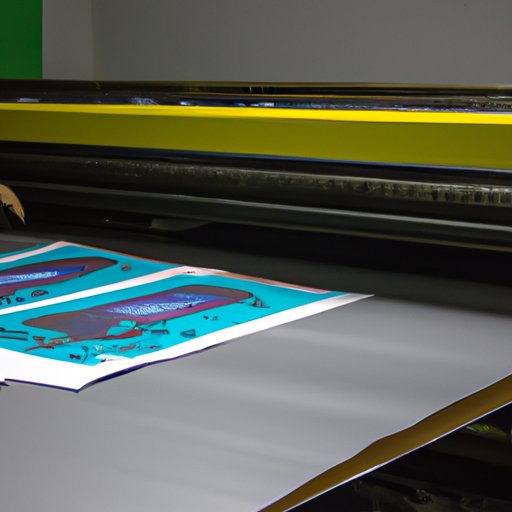Introduction
Screen printing is an art form that involves creating images on fabric, paper, and other surfaces. It’s often used for t-shirts, posters, and other items, but it can also be used for artistic purposes. Starting a screen printing business at home is a great way to make money while doing something you love.
Definition of Screen Printing
Screen printing is a process that involves using a mesh stencil to transfer ink onto a substrate. A template is created, and then ink is forced through the mesh onto the material. The stencil blocks certain areas of the substrate, resulting in the desired image or design.
Overview of the Process
Screen printing involves several steps. First, a design is created and transferred to the screen. Then, the screen is coated with emulsion and exposed to light. Once the emulsion has dried, the screen is washed out, leaving the design on the mesh. Next, ink is applied to the screen, and the substrate is placed underneath. Finally, the ink is transferred to the substrate.
Research Your Market
Before getting started, it’s important to do some research into the local market. Identifying potential customers and analyzing competitors will help you determine the best way to set up your business.
Identify Potential Customers
The first step is to identify potential customers. Think about who might be interested in your services and products. Consider different types of businesses and organizations that may need custom apparel or promotional materials. You can also target individuals who might be interested in custom designs for personal use.
Analyze Competitors in the Local Area
Next, take a look at the competition in your area. Research their pricing structure and the types of products they offer. This will help you determine how to differentiate yourself from the competition and how to price your services and products.
Create a Business Plan
Once you’ve done your research, it’s time to create a business plan. A business plan outlines your goals and helps you stay organized and focused. It should include information about your target market, pricing structure, marketing strategy, and financial projections.
Outline Your Goals
Start by outlining your goals. What do you want to achieve with your business? How much money do you want to make? What type of products and services do you want to offer? Answering these questions will help you create a roadmap for success.
Establish Your Pricing Structure
Next, come up with a pricing structure. Consider the cost of supplies, labor, and overhead when setting prices. Keep in mind that you want to make a profit, but you don’t want to price yourself out of the market.
Develop a Marketing Strategy
Finally, develop a marketing strategy. This should include both online and offline methods. Consider advertising in local publications, creating social media accounts, and attending trade shows and other industry events. Having a strong marketing plan will help you reach new customers and grow your business.
Invest in Quality Equipment
Once you have a business plan in place, it’s time to invest in quality equipment. Screen printing requires specialized tools and supplies, so make sure to research and compare different types of equipment before making a purchase. Consider cost vs. quality when selecting the right equipment for your needs.
Set Up Shop
Now it’s time to set up shop. Find a space that’s large enough to accommodate your equipment and supplies. Make sure the space is well-ventilated and has access to electricity and water. Set up your workstation and organize your supplies so they’re easy to find and use.
Begin Taking Orders
Once your shop is set up, you’re ready to start taking orders. Promote your business via word of mouth, print ads, and online platforms. As your business grows, consider hiring additional staff to help with production and customer service.
Conclusion
Starting a screen printing business at home is a great way to make money while doing something you love. To get started, research your market, create a business plan, invest in quality equipment, set up shop, and begin taking orders. With the right approach and dedication, you can turn your passion into a profitable business.
(Note: Is this article not meeting your expectations? Do you have knowledge or insights to share? Unlock new opportunities and expand your reach by joining our authors team. Click Registration to join us and share your expertise with our readers.)
